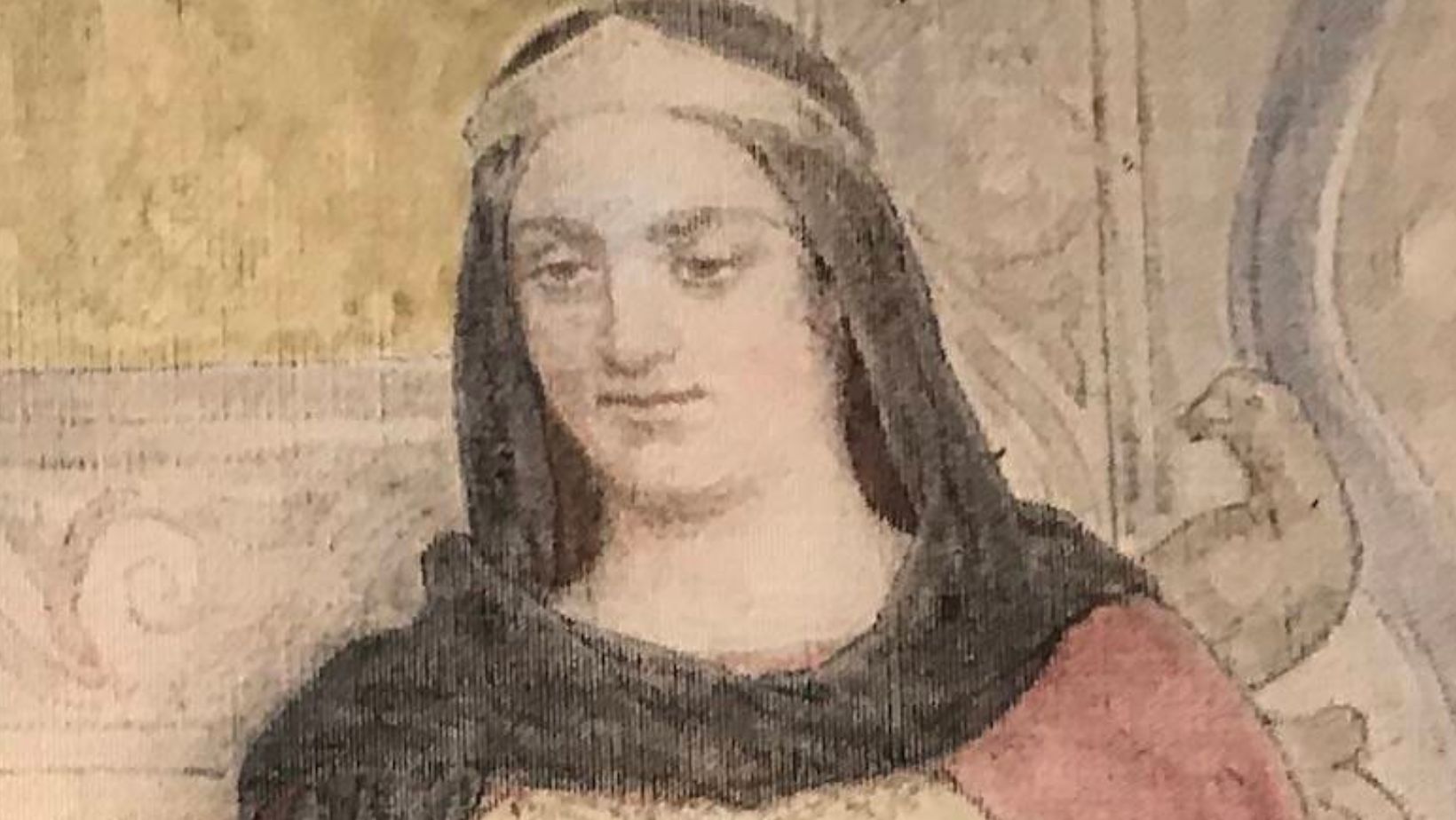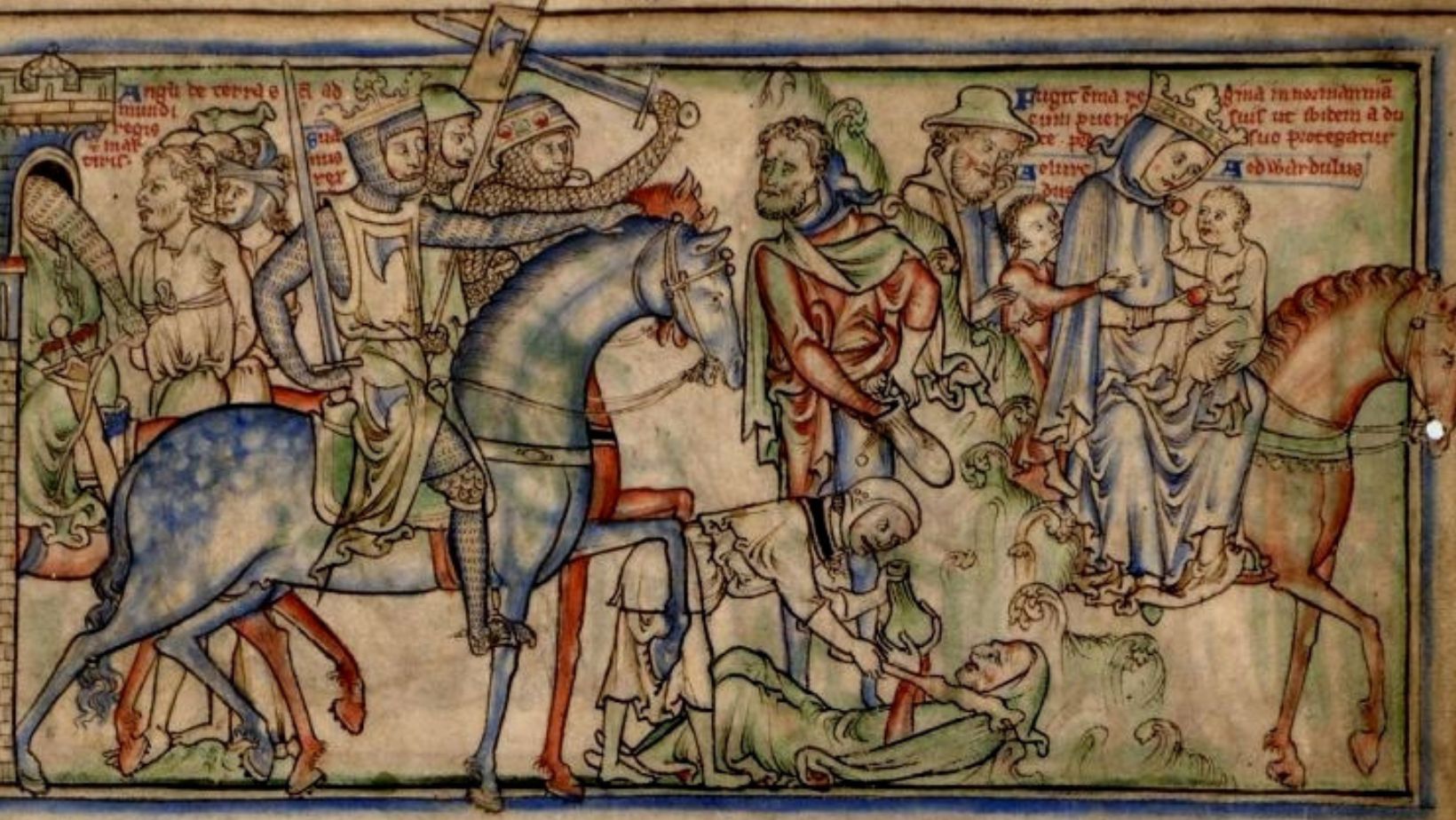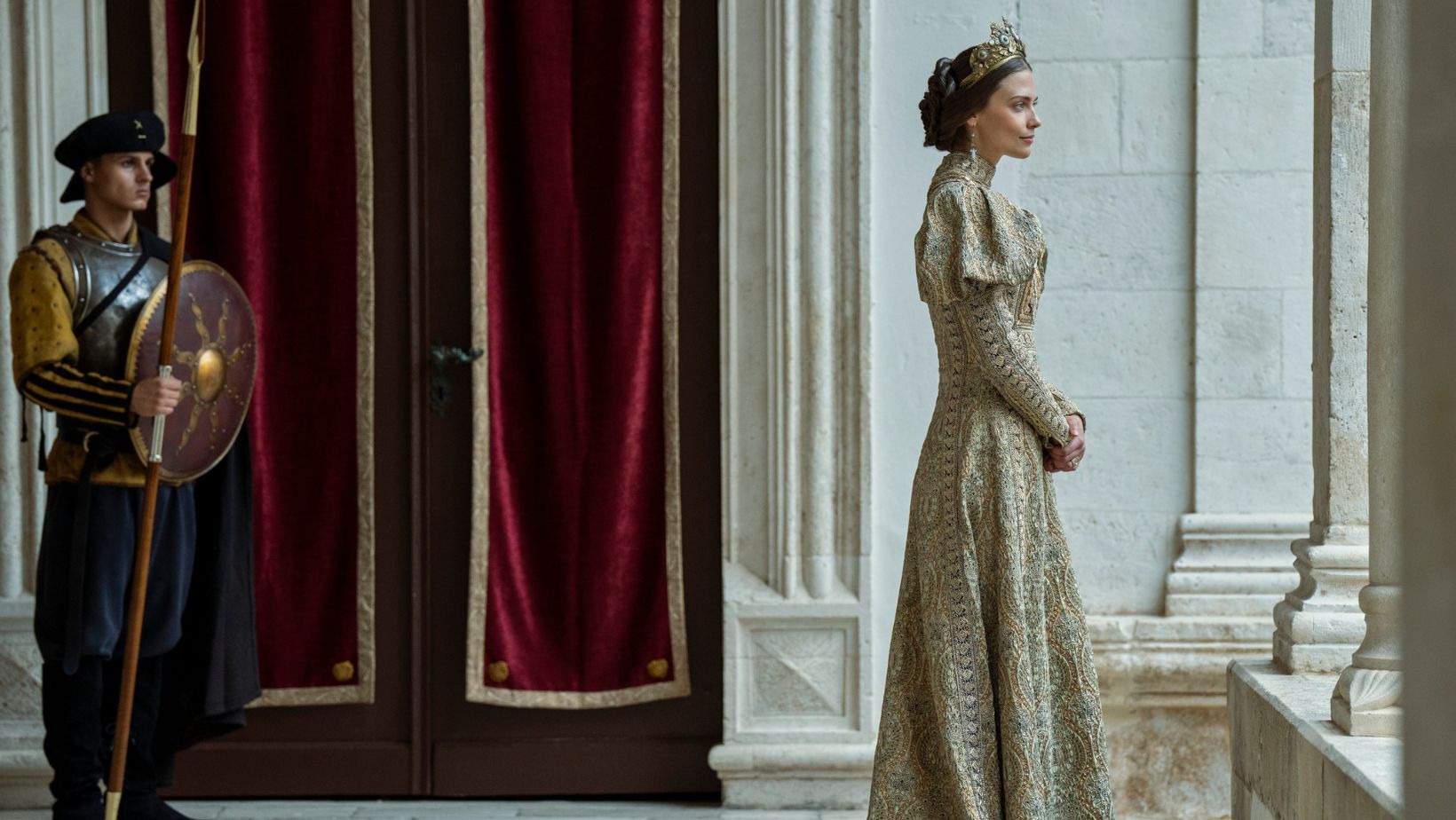Emma of Normandy was more than just a queen; she was a powerful figure in English history. Born into a noble family, she navigated the treacherous waters of medieval politics through two significant marriages. Her influence extended beyond her royal duties, shaping the future of England during a tumultuous time. In this blog, we will explore Emma’s fascinating life, her role in the political landscape, and her lasting legacy. Join us as we uncover the story of this remarkable woman who helped define an era in English history.
Emma of Normandy: Early Life and Background

Emma of Normandy was born around 990, into a prominent noble family in Normandy, France. She was the daughter of Richard I, Duke of Normandy, and his wife, Judith of Brittany. Her lineage placed her in a powerful position within the feudal hierarchy of the region.
Growing up, Emma experienced a politically turbulent environment, marked by conflicts between various factions. The Viking presence in Normandy created a unique dynamic, as many Normans were descendants of Norse settlers. This background prepared her for the challenges she would face as an adult.
Emma’s family connections were crucial in shaping her destiny. They opened doors to influential marriages, including her eventual union with Æthelred II, King of England. This early foundation in a politically charged atmosphere helped mold Emma into a formidable player in the medieval political landscape.
Emma of Normandy: Marriage to Æthelred the Unready
Emma of Normandy married Æthelred II, known as Æthelred the Unready, around 1002. This marriage was politically motivated, aimed at strengthening ties between England and Normandy. By marrying Emma, Æthelred sought to secure alliances with the powerful Norman nobility, enhancing his position amid Viking threats.
As queen consort, Emma’s life was filled with challenges. She had to navigate the complexities of a kingdom under siege from Viking invasions. Emma became a symbol of resilience during this tumultuous period. She played a crucial role in supporting her husband and maintaining stability within the court.
Emma bore several children, including Edward the Confessor, who would later become king. Her influence extended beyond motherhood; she actively participated in political affairs, often advocating for her family’s interests. Despite her husband’s reign being marked by instability, Emma’s presence contributed to the continuity of royal lineage in England. Her marriage to Æthelred shaped not only her life but also the future of the English monarchy.
Role During the Danish Invasions: Emma of Normandy
During the Danish invasions in the early 11th century, Emma of Normandy played a significant role in supporting her husband, Æthelred the Unready. The kingdom faced continuous Viking raids, which destabilized the region. As queen, Emma worked tirelessly to rally support among the nobility and to maintain order within the court. She understood the importance of unity in the face of external threats.
Emma’s influence was crucial in navigating these turbulent times. She encouraged military efforts and strategic alliances, hoping to bolster Æthelred’s defenses. Emma also actively participated in negotiations with Danish leaders, seeking to mitigate conflicts. Her diplomatic skills were essential in trying to secure peace amid ongoing warfare.
Despite these efforts, the invasions ultimately led to significant turmoil in England. Æthelred’s reign was marked by a struggle for power, as the Danes frequently challenged his authority. Nonetheless, Emma’s resilience and leadership contributed to the English resistance during this chaotic period. Her actions helped to preserve the royal line and maintain a sense of stability during a time of crisis.
Widowhood and Power Dynamic: Emma of Normandy

The death of Æthelred the Unready in 1016 dramatically altered Emma of Normandy’s status and influence in England. As a widow, Emma faced a shifting political landscape, with competing factions vying for power. Her position became more precarious as she navigated the ambitions of her sons, Edward and Edmund, and their claims to the throne. Emma needed to assert her authority in a male-dominated environment while ensuring the safety and legitimacy of her children.
Emma’s relationship with her sons was complex and shaped by the turbulent politics of the time. Edward, her son with Æthelred, was raised in exile after the Danish invasion, while Edmund remained in England. Emma sought to unify her sons under her influence, fostering their claims to the throne against Danish rule. This period tested her political acumen as she maneuvered between her sons’ ambitions and the interests of powerful nobles.
Emma’s widowhood also led to her forming new alliances. She married Cnut, the Danish king, which further complicated the dynamics of power. Through these relationships, she aimed to protect her family’s legacy and maintain a foothold in English politics. Emma’s strategic choices during this period were crucial in shaping her legacy and the future of the English crown.
Emma of Normandy: Marriage to Cnut the Great
Emma of Normandy’s marriage to Cnut the Great in 1017 had significant political implications for England. This union marked the consolidation of power between the Anglo-Saxon and Danish factions. By marrying Cnut, Emma aimed to stabilize the kingdom, which had been plagued by conflict. Her position as queen consort enabled her to influence decisions in the royal court.
Emma played a crucial role in unifying England under Cnut’s rule. She used her experience and connections to bridge the gap between the Anglo-Saxon nobles and the Danish conquerors. Emma’s marriage helped legitimize Cnut’s claim to the throne in the eyes of the English people. This alliance was pivotal in reducing tensions and fostering cooperation between the two cultures.
In her new role, Emma also worked to protect the interests of her children. She sought to ensure that her son by Cnut, Harthacnut, would have a rightful place in the line of succession. Emma’s political savvy allowed her to navigate the complexities of a divided kingdom effectively. Through her marriage to Cnut, she played a vital role in shaping the future of England during a transformative period.
Emma of Normandy: Cultural Contributions and Patronage
Emma of Normandy significantly influenced art, culture, and religion during her reign as queen consort of England. Her presence helped to foster a unique blend of Anglo-Saxon and Danish cultures. This cultural fusion can be seen in various artistic works, including illuminated manuscripts and church decorations from the period. Emma’s patronage encouraged local artisans, leading to a vibrant artistic scene.
Emma was also a prominent patron of churches and monasteries. She understood the importance of religion in uniting people and strengthening her power. Under her patronage, several churches were built or restored, enhancing the spiritual landscape of England. Notably, Emma contributed to the establishment of religious institutions that served as centers of learning and community.
Through her support of the church, Emma helped to promote education and literacy. Monasteries became hubs for manuscript production, preserving knowledge and culture for future generations. Emma’s dedication to religious institutions reflected her commitment to the welfare of her subjects. Her cultural contributions left a lasting impact on English society, influencing both art and religion during a crucial period of transition.
The Struggle for Power: Emma of Normandy: vs. Her Stepsons
The rivalry between Emma’s sons and Cnut’s children shaped the political landscape of early 11th-century England. After Cnut’s rise to power, tensions grew between Emma’s sons, Harold and Harthacnut, and Cnut’s sons, Sweyn and Harold. Each side sought to establish their claim to the English throne, leading to a fierce struggle for dominance.
Key events marked this rivalry. In 1036, Cnut’s son, Harold, was proclaimed king, prompting Emma’s sons to challenge his rule. In response, Emma’s son Harthacnut tried to assert his claim through military means, leading to significant conflict. This power struggle culminated in a series of battles and political maneuvers that destabilized the region.
Emma played a critical role in navigating these tensions. She strategically supported her sons while attempting to maintain her influence over Cnut’s realm. Despite her efforts, the rivalry weakened her position and the unity of the kingdom. Ultimately, this struggle for power highlighted the complexities of royal succession during this tumultuous period in English history.
Emma of Normandy: Legacy in Historical Narratives

Historians have portrayed Emma of Normandy in various lights throughout history. Initially viewed as a political pawn, her image evolved to that of a powerful queen who shaped events in her time. Medieval chroniclers often emphasized her marriages to Æthelred and Cnut, framing her as a unifying force in a divided England. However, some narratives also highlight the rivalries and power struggles that defined her later years.
Emma’s legacy in historical narratives reflects her lasting impact on English history. She navigated complex political landscapes, influencing succession and royal alliances. Her marriages linked the Anglo-Saxon and Danish royal lines, which was crucial in unifying the kingdom during turbulent times. This blend of cultures enriched England’s history and left a mark on its political structure.
In contemporary scholarship, Emma is often recognized for her resilience and strategic acumen. Modern historians analyze her role not just as a queen but as a key player in shaping England’s royal lineage. Her life and actions continue to spark interest, showcasing the complexities of women’s roles in medieval politics. Emma’s legacy remains an essential part of understanding England’s historical narrative.
Modern Interpretations of Emma of Normandy’s Life

Emma of Normandy has been portrayed in various forms of literature, film, and popular culture. These representations often emphasize her strength, intelligence, and political savvy. Many contemporary authors depict her as a formidable queen who played a significant role in shaping English history. Films sometimes dramatize her life, highlighting the intrigue of her marriages and the power struggles of her time.
These modern interpretations influence how we understand Emma today. They often challenge older narratives that portrayed her merely as a pawn in political games. Instead, Emma is seen as a strategic thinker who navigated a male-dominated world. This shift allows audiences to appreciate her contributions to English history more fully.
Additionally, these portrayals reflect contemporary values around women’s agency and power. By highlighting Emma’s influence and resilience, modern narratives inspire discussions about gender roles in history. They encourage a reevaluation of historical figures who were once overlooked or misunderstood. Emma’s legacy, as presented today, continues to resonate, showcasing her lasting impact on English heritage and culture.
Conclusion: Emma of Normandy: The Influential Queen of English History
Emma of Normandy played a crucial role in shaping English history through her marriages and political acumen. As a queen consort of both Æthelred the Unready and Cnut the Great, she navigated a complex landscape of power dynamics and cultural shifts. Her influence extended beyond her lifetime, impacting the political landscape and contributing to England’s unity during a turbulent period. Today, Emma’s legacy endures as a symbol of strength and resilience, inspiring modern discussions about the roles of women in history and the importance of recognizing influential figures often overshadowed by their male counterparts.
FAQs About Emma of Normandy: The Influential Queen of English History
What were the key challenges Emma faced during her reign?
Emma encountered numerous challenges, including navigating the tensions between the Anglo-Saxons and the Danes. After her first husband, Æthelred, died, she faced power struggles with her stepsons and her own sons. Additionally, she dealt with the political instability caused by invasions and conflicts during her time as queen.
How did Emma influence the succession of the English throne?
Emma’s marriages significantly impacted the English throne’s succession. Her children with Æthelred and Cnut had competing claims to the throne, leading to a complex struggle for power. Emma played a crucial role in supporting her sons, particularly in legitimizing their claims and maneuvering politically within the court.
What cultural achievements are attributed to Emma of Normandy?
Emma is credited with promoting the arts and culture during her reign. She supported the construction of churches and monasteries, influencing religious practices and education. Her patronage also extended to literary works that chronicled the history of her family and the Anglo-Saxon line.
What are some notable historical sources about Emma’s life?
Key historical sources include the “Encomium Emmae,” a Latin biography commissioned by her children, which highlights her accomplishments and influence. Other sources include the Anglo-Saxon Chronicle, which provides context on the political landscape of her time. Various chronicles from later historians also offer insights into her legacy.
How did Emma of Normandy’s story evolve in popular culture?
Emma has been portrayed in various forms of literature, films, and television shows that explore her life and significance. These modern interpretations often emphasize her strength and political savvy. As a result, Emma has become a symbol of women’s influence in history, inspiring new narratives about female power and agency in historical contexts.

